PREVIOUS
Freedom Fighters from Tamil Nadu Part - 04
July 24 , 2024
270 days
4394
0
(இதன் தமிழ் வடிவத்திற்கு இங்கே சொடுக்கவும்)
20. F. G. Natesa Iyer
Early Life and Education
- F. G. Natesa Iyer was born on 11 November 1880 to Janaki Ammaiyar and Gangadhara Shastri in Pudukkottai.
Career and Contributions
- Natesa Iyer's formal career was predominantly with the South Indian Railway Company.
- Where he rose to the position of District Traffic Superintendent in 1935, becoming the first Indian to hold this role.
Political Activism
- Natesa Iyer was a prominent activist in the Indian National Congress (INC) and played a significant role in the Indian Independence movement.
- He joined the INC in 1914 and was actively involved in its sessions, representing Tiruchirappalli at the sessions in Bombay (1915), Lucknow (1916), and Madras (1917).
- At the 1917 Madras session, he was an elected member of the All-India Congress Committee and was notably involved in moving the resolution on indentured labour.
- He was a strong supporter of the Indian Home Rule Movement and took part in the Passive Resistance resolution at the Madras Provincial Conference following the internment of prominent figures like Mrs. Annie Besant and George Arundale.
Contributions to Tamil Drama and Cinema
- In addition to his political career, Natesa Iyer was a pioneer in modern Tamil drama and cinema, contributing significantly to the cultural landscape of Tamil Nadu.
Legacy and Death
- Natesa Iyer passed away on 23 January 1963.
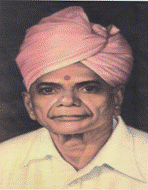
21. P. Kakkan
Early Life
- P. Kakkan was born on 13 June 1909 in Madurai.
- On 8 July 1939, he led a group of five Dalits into the Meenakshi Amman temple in Madurai, marking a significant milestone in the temple entry movement.
- This event, organized by the Harijan Sevak Sangh, faced severe opposition from upper-caste Hindus but was a historic feat.
Role in India’s Independence Movement
- From his youth, he was actively involved in movements to empower Dalits and the backward classes.
- Kakkan was well-known for his role in the freedom struggle and the Dalit rights movement.
- He was arrested for his involvement in the Quit India Movement in 1942 and was sentenced to 1.5 years of imprisonment.
- Inspired by the Temple Entry Proclamation issued in 1936 in Travancore, which permitted entry to everyone irrespective of caste in temples, the temple entry movement gained momentum in Madras.
- In June 1939, members of the Madurai Congress, including Kakkan, founded a Temple Entry Propaganda Committee to enable members of lower caste communities to enter the Meenakshi temple.
- This effort culminated in the historical event mentioned above.
- On 17 July 1939, the Chief Minister of Madras Presidency, C. Rajagopalachari, passed the Madras Temple Entry Ordinance.
Contribution to Constitution Making
- Kakkan was elected to the Constituent Assembly on a Congress party ticket from the Madras province.
- He actively participated in debates on separate electorates and reservations.
Later Contributions
- In 1951, Kakkan was elected to the Lok Sabha from Madurai.
- An active member of the Congress party, he was appointed president of the Tamil Nadu Congress Committee in 1957.
- He was also a member of the Madras Legislative Assembly from 1957 to 1967.
- Kakkan served as a minister in two successive Tamil Nadu governments, holding several important portfolios: public works (1957-62), agriculture (1962-63), and home affairs (1963-67).
- As a legislator and a member of the executive, he was celebrated as an honest and the hardworking leader.
- One of his most noteworthy achievements as a minister was the construction of dams and the establishment of agricultural colleges in Tamil Nadu.
- After his defeat in the 1967 elections against a DMK opponent, Kakkan retired from politics.
Death and Legacy
- Kakkan passed away on 23 December 1981.
- He is still regarded as an eminent leader, appreciated for his role in shaping Dalit politics and agricultural reform in present-day Tamil Nadu.
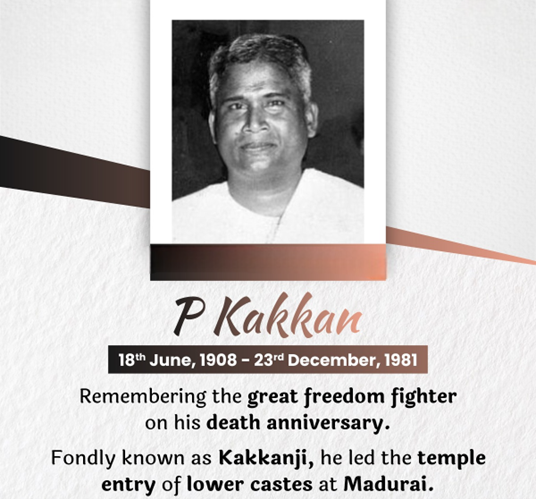
22. Thattai Krishnamachari
Early Life
- Tiruvallur Thattai Krishnamachari was born on 26 November 1899 to a Madras High Court judge.
- He received his education from the Madras University.
- In 1928, he set up TTK Company Ltd., an agency.
- A few years later, he joined politics full-time.
Involvement in Independence Movement
- Krishnamachari became a member of the Madras Legislative Assembly in 1937 and of the Central Legislative Assembly in 1942.
Contributions to Constitution Making
- Krishnamachari was elected to the Constituent Assembly from Madras on a Congress Party ticket.
- As a member of the Drafting Committee, he dedicated 4014 hours to numerous assignments of the Committee.
- In the Assembly, he intervened on the issues of freedom of speech and emergency provisions, among others.
Political Career Post-Independence
- Krishnamachari was the Central Minister for Iron and Steel between 1955 and 1957.
- Later, he served briefly as the finance minister in 1956.
- During his tenure, he brought in key tax reforms; he introduced taxes on capital gains, wealth, estate, and expenditure.
- Amidst the Mundhra corruption scandal, he resigned in 1958.
- But in 1963, he was recalled to Nehru’s cabinet and served as the finance minister for two years.
- He played a crucial role in the setting up of financial organizations including Industrial Development Bank of India and Unit Trust of India.
Key Writings
- In 1954, Krishnamachari authored his memoir ‘Parliamentary Life during 1929-54’, as a part of the Silver Jubilee Commemoration Volume published by Lok Sabha Secretariat.
- Death: He passed away on 7 March 1974.
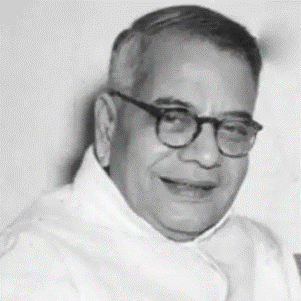
23. Perumal Varadarajulu Naidu
Early Life
- Perumal Varadarajulu Naidu was born on 4 June 1887 in Rasipuram, Madras Presidency, British India, into a Telugu Balija Naidu family.
- His father, Perumal Naidu, was a wealthy landlord.
- Varadarajulu Naidu received his early education in Madras and trained as an Ayurvedic physician.
Politics
- Varadarajulu Naidu entered politics early and became a member of the Indian National Congress.
- He gave up his medical practice in 1917 to focus on political activities.
- He was the President of the Tamil Nadu Congress Committee (TNCC) from 1924 to 1926.
Cheranmadevi School Controversy
- Varadarajulu Naidu was involved in the Cheranmadevi school controversy, opposing the practice of separate dining for Brahman and non-Brahman students at Cheranmadevi Gurukulam, a national school.
- His efforts led to significant changes in the school's policies and highlighted caste issues within the Congress party.
Temple Entry Movement
- Later in his life, Varadarajulu Naidu actively supported the temple-entry movements in the Madras Presidency, advocating for the rights of socially disadvantaged groups.
- Journalism
- In 1925, Varadarajulu Naidu founded the weekly Tamil newspaper ‘Tamil Nadu’.
- He also started ‘The Indian Express’ in 1931 but had to sell the newspaper within a year due to financial difficulties.
Key Contributions
- Political Leadership: As President of Tamil Nadu Congress Committee and an advocate in significant controversies and movements.
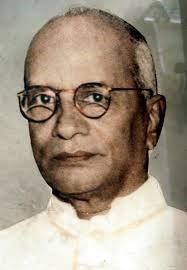
24. C.R. Narasimhan
Early Life
- C.R. Narasimhan was born in 1909 in Salem, Madras Presidency, to Chakravarti Raja Gopala chari and Chakravarti Alamelu Mangamma.
- As a prominent freedom fighter, his father was a prominent lawyer and member of the Salem municipality.
- Narasimhan joined the Indian independence movement at the age of 11 in 1920 and was imprisoned for his participation in the 1930 Vedaranyam Salt Satyagraha.
Parliamentary activities
- Narasimhan began his parliamentary activity in 1951.
- He was elected to the Lok Sabha from the Krishnagiri constituency in 1951.
- He won by a margin of 6,194 votes over C. Doraiswamy Gounder.
- He was re-elected in 1957 with a narrower margin of 367 votes over G. D. Naidu.
- He served until 1962, when he lost his seat to K. Rajaram of the Dravida Munnetra Kazhagam (DMK).
- Although his father had left the Indian National Congress to join the Swatantra Party, Narasimhan remained with the Congress until the 1960s, later joining the Swatantra Party.
Local Governance and Other Roles
- In 1970, Narasimhan was elected to the Corporation of Madras and served until 1975, also leading the Swatantra Party within the corporation.
- He also served as Chairman of the Gandhi Ashram in Tiruchengode and as a member of the Tamil Nadu Prohibition Committee.
Key Contributions
- Indian Independence Movement: Involved in the Vedaranyam Salt Satyagraha and other activities.
- Parliamentary Service: Represented Krishnagiri in the Lok Sabha from 1951 to 1962.
- Local Governance: Contributed to the Corporation of Madras and held leadership positions in local organizations.
- Death
- He died in 1989 at the age of 80.
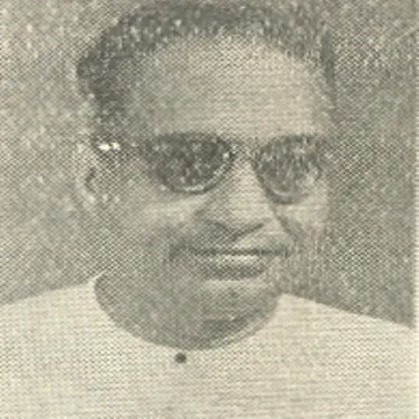
Leave a Reply
Your Comment is awaiting moderation.


